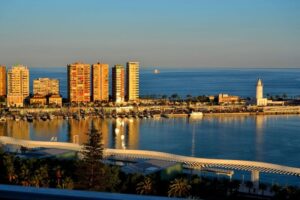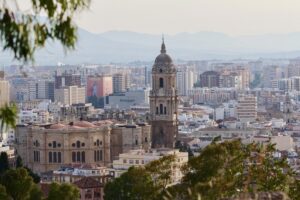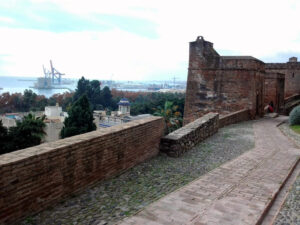In addition to its festivities and traditions, good weatherand gastronomy Malaga has a long history that goes back thousands of years. Specifically to the VIII century B.C. Therefore, it is considered one of the oldest cities in Europe.
If you are thinking of visiting Malaga soon, we recommend that you soak up a little of its history so that you can enjoy it to the fullest and know the origin of every step you take on one of the oldest soils on the continent.
Malaga, or Malaka (the original name of the city), which has welcomed very diverse civilizations attracted by its strategic location by the sea, has architectural treasures and cultural traditions that testify to its rich history. We will then take a journey through time from the beginnings to the present day in one of the oldest cities in Europe.
On the other hand, if you want to travel not only through time, but also through your senses, then you should stop by Cambara Restaurant and try one of its unique dishes, located in the Port of Malaga, a key place in the history of this city.
The first Malagueños were Phoenicians
The honour of being the first official inhabitants of Malaga is given to the Phoenicians. During the 8th century B.C. they created a settlement under the Guadalhorce River and named it Malaka, which translates to "place of salting fish". Nearby were the Greeks who also founded a settlement near this area and created a colony called "Mainake", which was later destroyed by the Carthaginians.
Roman period in Malaga
In 218 B.C., the Romans expelled the Carthaginians and granted Malaga the status of confederate city of Rome. Under Roman rule, Malaga experienced a great commercial and architectural growth: the present-day Roman Theater under the feet of the Alcazaba is just one of the proofs of Malaga's splendor under Rome.
Malaga: the Arab period
The Arabs, the next civilization to inhabit Malaga, invaded the city and held it under their rule for almost eight centuries. Commercial activity in the area flourished and the population increased with the settlement of various cultures: Berbers, southern Arabs, Mozarabs and Jews. With its seaport as a crucial point for trade and barter, it was a prosperous time for Malaga. The castle of Gibralfaro, with its walls and magnificent gates, the Alcazaba and the mosque of Calle Granada are a vestige of this era of prosperity.
Later, however, a series of crop failures, epidemics and floods ravaged the city. In addition, an earthquake destroyed most of the buildings in Malaga. Miraculously, the Cathedral of Malaga managed to survive.
Christian era in Malaga
After the expulsion of the Muslims from all of Andalusia, Malaga had become one of the most important commercial districts on the Mediterranean coast. An upper class bourgeoisie emerged, composed mainly of two families, the Larios (hence the name of Calle Larios) and the Heredia, who contributed greatly to the industrialization of Malaga.
19th Century Malaga
The 19th century was a dark chapter for Malaga in which political and economic crises led to a period of decadence. In addition, there were strong epidemics, such as the plague that also devastated the region, and consequently, Malaga's maritime trade with America ceased, which caused the collapse of its main industry.
20th century to the present
It was not until the second half of the twentieth century when the capital of the Costa del Sol again experienced rapid urban and industrial growth as a result of the boom in tourism in the area and fish exports.
Today, Malaga is a modern city where you can still find the vestiges of its past and whose rich heritage makes the city of the Costa del Sol a must-see. Above all you must visit its historic center, where you will find the Beluga Restaurantrecommended by the Michelin Guide, where you can taste the true history of the most southern Malaga and sailor.


